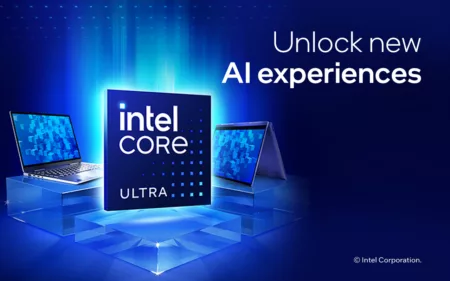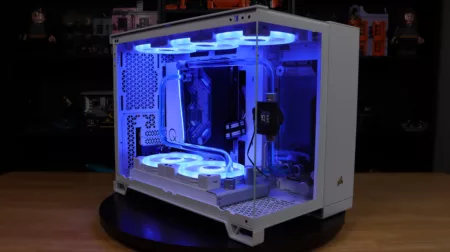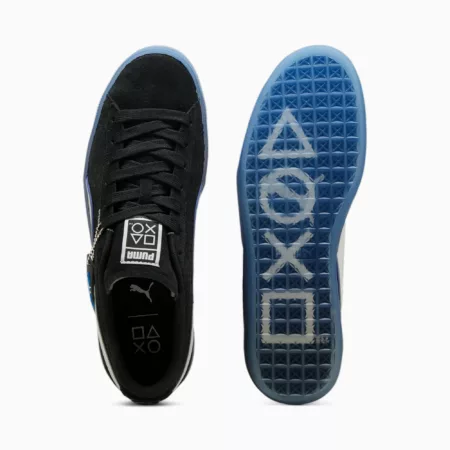With all the success that Capcom’s cash-raking Monster Hunter franchise has done for PSP, it’s not surprising that other companies will want in on the success. Some recent examples include Shin Sangoku Musou Multiraid (Dynasty Warriors: Strikeforce for English-speaking audiences) and God Eater. Still, with these games, it’s hard to shake off the feeling that they’re still MH clones with their own little twists on the formula.
This, friends, is where Metal Gear Solid: Peace Walker comes in. Sure, this is another game where you can go play cooperatively with up to three other friends. Sure, it’s another game where you take on massive enemies that barely manage to fit the PSP’s screen. However, the real kicker here is that it’s a true Metal Gear Solid crafted around the portable’s strengths and limitations.
Set ten years after the events of Metal Gear Solid 3: Snake Eater, we find Naked Snake AKA Big Boss in the early stages of forming Militaires Sans Fronteirs (Soldiers Without Borders), which is more or less of a private military organization along with his right hand guy Kazuhira Miller. At the beginning of the story, MSF’s services are solicited by a Costa Rican professor, Ramon Galvez Mena, and his student/ward, Paz Ortega Andrade. As it appears, an unknown military force has set up shop in Costa Rica, a nation without its own standing military. As an army that answers to no nation, Professor Galvez Mena wants the MSF to investigate and subsequently drive them out. In return, MSF is given an abandoned offshore oil rig as a forward operations base. This base is eventually what becomes Outer Heaven within the Metal Gear series canon.

The whole game starts with this simple premise and takes off from here. Surprisingly, the plot in this particular MGS isn’t as convoluted as we’ve come to expect from series creator Hideo Kojima, but it’s still an ultimately satisfying follow-up to Snake Eater. Since we’re on that subject, don’t worry too much if you’re not up to speed on the events of Snake Eater, there’s more than enough reference material to fill you in on what’s going on.
The main plot unfolds through graphic novel-styled cutscenes done mostly by series veteran Ashley Wood, who is also responsible for the MGS digital comic. Aside from having a pleasing overall aesthetic, these cutscenes have certain interactive elements akin to quick time events or QTEs. These challenges range from timed to rapid button presses, and the prompts fit into the overall visual style of the cutscenes, so they’re not intrusive.
The cornerstone of the MGS series, which is stealth-based gameplay, is here in full force. Sneaking missions will of course involve moving past guards undetected or having to knock them out. At your disposal will be various tools and equipment to aid you in distracting, drawing out, or just plain and simple messing around with enemies. The most notable addition to your repertoire is the Fulton Recovery System. Its main purpose in the game is for recruiting enemy soldiers into MSF and rescuing POWs. If you’ve ever seen Moonraker or the Dark Knight, then you pretty much know how it works. A few things have been taken out that might draw the ire of some longtime series fans, though. First up, you can’t crawl. And second, you can’t sidestep with your back against the wall or some kind of cover. While irksome at first, these omissions somehow speed up the pace at which sneaking missions are played.

Sneaking won’t be the only thing you’ll be doing here, though. The variety of missions here in Peace Walker is dizzying. Sure, the main story missions don’t stray too far away from core MGS gameplay, but take a look at the Extra Ops available (there are over a hundred) and you’ll be sinking hours and hours into those. The bulk of these missions are timed challenges which test your mettle in various situations. Some examples include sneaking through enemy territory as quick as possible without being detected and some more absurd ones like holding up guards while armed only with a banana. Then, there are the boss battles…
This is where the clear Monster Hunter influence comes in. For boss battles, up to four players can team up via ad hoc to take down tanks, armored troop transports, attack helicopters, and humongous AI weapons. These battles are completely possible to finish solo, provided that you have the time and patience to do so. The cool thing about co-op is being able to formulate strategies and coordinate attacks with your teammates. If a player goes down, he or she can be revived through a quick round of CPR from a comrade. There’s even the ability to “snake-in” and go into formation where the guy in front takes care of the movement while you’re left free to shoot and cover your flanks. To top it all off, items and recruited soldiers gained at the end of a mission are shared among all members of the team. It’s even possible to send over some supplies like thrown weapons and ammo from your own stockpile to your ad hoc friends at the end of missions.

Concerning the vehicle battles, there are two main ways you can go about with them. You can either outright destroy them or neutralize the armed escorts along with the unit commander to capture the vehicle. Capture, you say? Yes, you heard that right. You can capture vehicles here. It doesn’t mean they’re usable in missions. They are, however, yours to dispatch in Outer Ops, which is part of the base management mode that I’ll touch on in a bit. The towering (and downright creepy when they “sing”) AI weapons, while not up for capture, are salvageable for parts with which to build your own AI weapon from. You can expect to go toe-to-toe with them as frequently as you would when harvesting vehicles for your combat division.

As mentioned earlier, Peace Walker also features a surprisingly deep and addicting base management mode. Recruited enemy soldiers, POWs, and even characters from the main story can be assigned into one of five divisions: combat, research and development, mess hall, medical, and intel. From there, you can deploy the combat unit to Outer Ops, have R&D develop new weapons for you, get your stats boosted by the mess hall, keep your staff healthy with the medical team, and have intel give you extra info about missions. It’s a fairly easy-to-use yet supremely addicting part of the whole experience that gives you reason to expand your roster to raise each team’s level. Along with that, you get to see how Outer Heaven grows from a ragtag bunch of mercs into a full-fledged military power.

Of course, you can’t talk about a Metal Gear Solid game without tackling its presentation. And man, there have been times when I’ve forgotten that I’ve been playing a PSP game. How the Kojima Productions team managed to cram all that graphical polish into a UMD is still beyond me. Environments are well rendered all in real time. The jungle environments in particular, though less detailed, give you nearly the same sense of lushness from Snake Eater. The AI weapon battles are awesome in scale, with about two of them just being “crap your pants” huge or several stories tall. The audio is ace, too. Ambient sounds help immerse you in the experience, different guns have their own individual “kick” to them, and the incidental music intersects nicely with what’s going on on-screen. Like with any other PSP game with fantastic sound design, you really have to play this with a good set of earphones or headphones.

As of this writing, there’s a crazy amount of extras to be found in MGS: Peace Walker. For story and information purposes, you can listen to briefing files before going on missions. They’re basically audio conversations between Snake and various supporting characters. You won’t even have to keep your eye on the screen while listening. The metal gear building part of the game plays out like a very stripped down but still fun version of the customization aspect of the Armored Core series. You’ll also be able to recruit new blood into MSF by scanning for wi-fi hotspots. Tired of playing co-op? Then shoot the living crap out of each other in VS Ops. And then there’s something involving some “guests” from the Capcom franchise that inspired this installment. See, you’ll most likely have a hard time taking this one out of your UMD drive.


With all that said, there are still a few flaws. Not huge, game-breaking ones, but some valid ones nonetheless. For one, the controls just might be your greatest enemy at certain times, especially boss battles. Thankfully, this is one of those games with better implementation of the face buttons for camera control. The camera has a bit of a speed problem when trying to keep track of quick moving targets, too. By all means, these are just some minor problems that barely put a leave any mark on the overall experience.
This folks, is a true Metal Gear Solid game lovingly crafted for the PSP, and a damn good one at that. If you’re reading this, go out and get it. Chances are, you already have it. If that’s the case, then maybe I’ll see you around for some co-op play.






